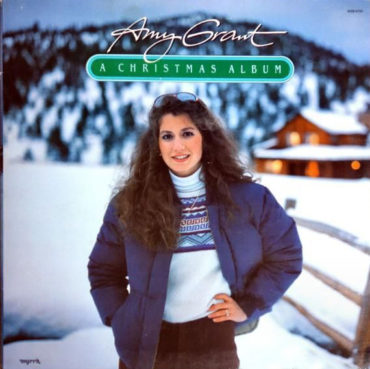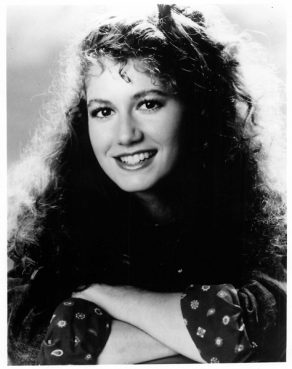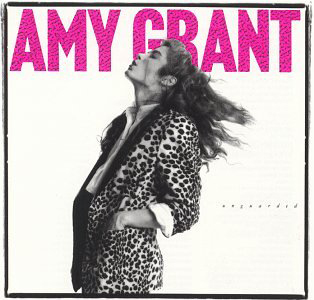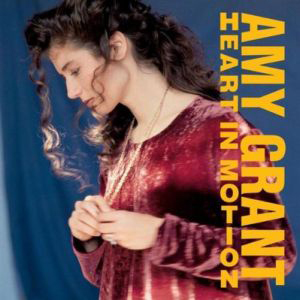(RNS) — This week, Amy Grant was recognized for hitting 1 billion listens across all streaming platforms. It’s probably not a coincidence that this happened at Christmastime, since that’s when most people listen to Grant.
The Tennessean dubbed her “Nashville’s Queen of Christmas music.” Back in 2015, Jia Tolentino wrote an article for Jezebel awesomely titled “What’s the Best Song on Amy Grant’s Christmas Album? Trick Question B—- You F—— Love Them All.”
Grant has written four Christmas albums and this year released a 35-song volcano of holiday cheer compendium called “Amy Grant Christmas,” so her association with the season is hardly an accident.

But in my house, growing up, Grant wasn’t a Christmas queen. She was just a queen.
I remember where I was the first time I heard Bruce Springsteen. Same with AC/DC. Madonna. Bob Dylan. Snoop Dogg. Tina Turner. Most people my age never had to seek out these artists, the same way we didn’t have to seek out Chicken McNuggets or Donald Duck. They just happened to us. But I was home-schooled in the ’90s, so most people I knew had no use for music that didn’t have a Bible verse or two in the chorus. I nodded in pretend understanding when my few cool friends talked about Tupac or Kurt Cobain. I didn’t figure out who these people were until high school.
But Grant? She with the voice like an angel? The Nashville legend who alighted on the music industry like a sparrow on a branch in 1976, five weeks before her 16th birthday?
I don’t remember the first time I heard Grant.
Because Grant has just always been there. Sort of like air for a human. Or water for a fish.
My family contributed an embarrassing share of those billion streams because for a certain kind of person, Grant made sense in a way no other pop star did, or even really could. Early on in her career as a Christian recording artist, she was excoriated by critics both mainstream and religious for daring to live in both worlds. But for me, it never looked like two worlds. It was just the one, and she was the only person who’d figured that out.
A little history:

Amy Grant in 1984. RNS file photo
In the 1970s, the contemporary Christian music industry was a fringe curiosity for God-fearing hippies like Larry Norman and such. The acts involved were largely sideline oddities regarded warily by the mainstream. Christian weirdos built their own upside-down pop culture ecosystem, where being a virgin was punk rock and saying no to drugs was rejecting the establishment, and everyone else was pretty content to let them go off.
Grant was different. Young, pretty and a natural songwriter, she would have been intriguing to anyone on the hunt for a burgeoning star. And even more appealing, she was determined to grow. Her early albums, like 1979’s “My Father’s Eyes” and 1980’s “Never Alone,” showed her raw talent but were hamstrung by try-hard production and kiddie pool sheepishness. You can hear the songs asking permission to be allowed at the grown-ups’ table.
But then came 1982’s “Age to Age,” the first one I really remember. That album is one wild ride.
“Sing Your Praise to the Lord” has a piano intro spin on Bach’s “Fugue No. 2 in C Minor,” for crying out loud. (I had no idea who Bach was when I was little. I just figured this was how songs started sometimes.) The lyrics on the album’s big, gorgeous hit, “El Shaddai” — titled for a Judaic name of God — are about 50 percent Hebrew. We sang it in church on Sunday.
We sang a lot of Amy Grant songs in church on Sunday, thanks to my parents, who absolutely adored Grant and occasionally helped lead worship in the church. (I told my mom I was trying to write a thousand words about Grant for this piece and she responded: “I think she’s fabulous. There’s four.”)
“Age to Age” launched Grant into an unexpected world of stardom. It was the first Christian album to go platinum. She won a Grammy. She released her first Christmas album.
 This Amy Grant was easy to introduce to kids my age. My peers were listening to Ace of Base and New Kids on the Block, and conservative Christian families didn’t know what to make of them. But kids who listened to Grant walked around singing “I have decided I’m gonna live like a believer.” That was the way our parents liked it and the songs were catchy enough that we didn’t mind it either. However, this simple setup wasn’t to last.
This Amy Grant was easy to introduce to kids my age. My peers were listening to Ace of Base and New Kids on the Block, and conservative Christian families didn’t know what to make of them. But kids who listened to Grant walked around singing “I have decided I’m gonna live like a believer.” That was the way our parents liked it and the songs were catchy enough that we didn’t mind it either. However, this simple setup wasn’t to last.
Because in 1985, Grant dropped “Unguarded,” which featured her dancing in a spectacular leopard-print blazer on the cover, which young me found positively mesmerizing. Nervy Christian critics started sweating. This, they said, is why Christians shouldn’t do rock ’n’ roll. (For proof, Google “Amy Grant devil.”)
Grant shrugged it off. “I’m trying to look sexy to sell a record,” she told Rolling Stone. “I feel that a Christian young woman in the ’80s is very sexual.” The same year, she told Time magazine that “I aim to bridge the gap between Christian and pop.” She succeeded. “Find a Way” from “Unguarded” became the first non-Christmas Christian song to land on Billboard’s Hot 100, and 1988’s “Lead Me On” followed suit, with four songs that charted. And that was just the warmup.
Then came 1991’s freight train of adult contemporary bops, “Heart in Motion,” which sent five songs to Billboard’s Top 20, and “Baby, Baby” went all the way to the top. Grant insisted to anyone who would listen that she’d written the hit for her actual newborn baby, Millie, but anyone who watched the music video (which I did, frequently and attentively) ended up running with a flirtier interpretation.
It’s dripping with romance.
Most of “Heart in Motion” is dripping with romance, a treasure trove of wholesome, meet-cute ready pop singles like “Every Heartbeat,” “Good for Me” and “That’s What Love Is For.” It’s ridiculous for an album to have this many good songs on it. It sold 5 million copies, back when albums could do that sort of thing, and by a stroke of luck, it landed just as I started developing actual crushes.
 Sure, there were still some spiritual tunes mixed in. The yoga background track “Hope Set High” in particular stands out, which features the actual, repeated line: “If there’s anything good that happens in life it’s from Jesus.” These shifts from gooey teen romance to youth group prayer time energy could be jarring, but that’s what made it work for me.
Sure, there were still some spiritual tunes mixed in. The yoga background track “Hope Set High” in particular stands out, which features the actual, repeated line: “If there’s anything good that happens in life it’s from Jesus.” These shifts from gooey teen romance to youth group prayer time energy could be jarring, but that’s what made it work for me.
I was on the cusp of my teens, going to an evangelical church in the Midwest, so these sorts of hormonal U-turns — from dreaming about changing the world for God to dreaming about making out with literally anyone — were a regular part of my day-to-day life.
Grant’s attempt to sit astride the world of God-honoring gospel tunes and chart-topping pop music wasn’t some sort of two-faced exercise in hypocrisy. It was a peek inside the mind of the average Christian teenager. It still is.
Without Amy Grant I don’t know how I would have figured out these sorts of things were allowed. Because the message I took away from Grant is “It’s OK.” It’s OK to love God and have crushes on people. It’s OK to sing about Jesus and daydream about kissing.
The churches I was raised in treated young love like austere responsibility, like a calf to be prepped for eventual sacrifice. Grant said it was just fun.
And that was my first real introduction to pop music of any kind. The weird world of Grant didn’t make a lot of sense on paper, but it worked for those of us who needed proof that the things we felt were valid.
Growing up with Grant’s music in the house — from “El Shaddai” to “Baby, Baby” — let me know there was room for the whole human experience. Christians didn’t need a siloed-off echo chamber. Those walls weren’t built to contain someone like Grant anyway.
(Tyler Huckabee is the senior editor of Relevant Magazine. Follow him on Twitter at @tylerhuckabee. The views expressed in this commentary do not necessarily represent those of Religion News Service.)





